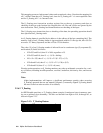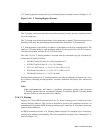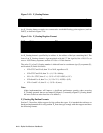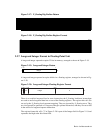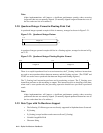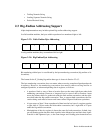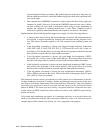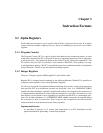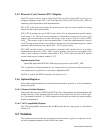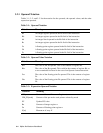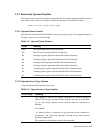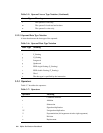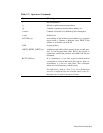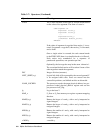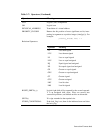3–2 Alpha Architecture Handbook
There are some interesting cases involving R31 as a destination:
• STx_C R31,disp(Rb)
Although this might seem like a good way to zero out a shared location and reset the
lock_flag, this instruction causes the lock_flag and virtual location {Rbv +
SEXT(disp)} to become UNPREDICTABLE.
• LDx_L R31,disp(Rb)
This instruction produces no useful result since it causes both lock_flag and
locked_physical_address to become UNPREDICTABLE.
Unconditional Branch (BR and BSR) and Jump (JMP, JSR, RET, and JSR_COROUTINE)
instructions, when R31 is specified as the Ra operand, execute normally and update the PC
with the target virtual address. Of course, no PC value can be saved in R31.
3.1.3 Floating-Point Registers
There are 32 floating-point registers (F0 through F31), each 64 bits wide.
When F31 is specified as a register source operand, a true zero-valued operand is supplied. See
Section 4.7.3 for a definition of true zero.
Results of an instruction that specifies F31 as a destination operand are discarded and it is
UNPREDICTABLE whether the other destination operands (implicit and explicit) are changed
by the instruction. In this case, it is implementation-dependent to what extent the instruction is
actually executed once it has been fetched. An exception is never signaled for a load that speci-
fies F31 as a destination operation. For all other operations, it is UNPREDICTABLE whether
exceptions are signaled during the execution of such an instruction. Note, however, that excep-
tions associated with the instruction fetch of such an instruction are always signaled.
Implementation note:
As described in Section A.3.5, certain load instructions to an F31 destination are the
preferred method for signalling a cache block prefetch.
A floating-point instruction that operates on single-precision data reads all bits <63:0> of the
source floating-point register. A floating-point instruction that produces a single-precision
result writes all bits <63:0> of the destination floating-point register.
3.1.4 Lock Registers
There are two per-processor registers associated with the LDx_L and STx_C instructions, the
lock_flag and the locked_physical_address register. The use of these registers is described in
Section 4.2.



